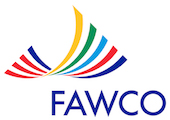By Madaline Keros, UN Rep (AWC Bern)
In 1946, the first Chair of the UN Commission on Human Rights was a woman, Eleanor Roosevelt. Appointed by Harry Truman, she played a pivotal role not only in drafting but also in brokering agreement by other UN member states on the UN Declaration on Human Rights. The Commission on Human Rights began meeting from then on until it was taken over and revamped in 2006 by the Human Rights Council (HRC). Seventy-one years later, another American woman (the author) had her first intense but exciting experience at the Human Rights Council this past March, serving as part of the FAWCO Team of UN Representatives. I shadowed an inspiring FAWCO UN Representative and Executive Director of Graduate Women International, Stacy Dry Lara, who provided me with invaluable insights on how the Council worked and practical pointers on what to do as an attendee.
The HRC meets three times per year: March, June and September: the March session consists of four weeks of open and closed meetings running at two different levels: the so-called “high-level” i.e. operating in an official, diplomatic capacity, and the generally open side events organized by civil society organizations who voice their position on particular issues based on field experience. The high-level meetings throughout the four weeks address each of the ten items of the HRC Agenda: 1. organizational and procedural matters; 2. annual report of UNHCR and OHCHA; 3. promotion and protection of all human rights; 4. human rights situations requiring attention; 5. human rights bodies and mechanisms (forum on minority issues); 6. universal periodic review (of particular UN member states); 7. Palestine and the Arab territories; 8. follow-up and implementation of the Vienna Declaration; 9. Racism, xenophobia and other forms of intolerance and the implementation of the Durban Declaration; 10. technical assistance and capacity-building. With the backdrop of the Agenda Items, the Council paid particular attention to the following current, pressing human rights issues: gender-based violence, migration and protection of refugees, youth and conflict, women and conflict, health and HR and HR education.
Especially during the first week, security was tight, but my FAWCO UN Badge let me glide easily through long lines of airport-like entry controls. During much of that week and those that followed, diplomats, foreign ministers and royalty from around the world met in open and closed meetings to discuss, debate, negotiate and provide official statements on their country’s stance regarding human rights in their countries and the ten HRC Agenda Items. Official statements and discussions occurred in Room XX which was like an active stage: while 2-minute statements were being read aloud by representatives of member states, attendees from permanent missions and UN or EU representations walked around briskly carrying laptops from aisle to aisle in search of colleagues or to consult with other missions. Throughout the four weeks, diplomats and senior level colleagues often sat together informally over coffee in the café one floor below Room XX in animated discussions and negotiations regarding agenda items.
While the 2-minute speeches gave a bird’s eye view of pressing issues, the side events provided an up-close and on-the-ground look at the problematic human rights situation in several countries and the responses from civil society organizations and aid workers. I was impressed at the commitment and passion of panelists, though listening to the stories of violence, conflict and human rights atrocities—not infrequently targeted at women and girls—was also deeply troubling.
Between events, I would walk over to the café to network with other HRC participants. On the first day, I met a high-level Saudi Arabian diplomat leading his country’s Human Rights Commission. FAWCO’s commitment to supporting girls’ education (especially with its current Target Project) was particularly interesting to him and came close to home: with a daughter working as a neurologist in a prominent hospital in Jeddah, he profoundly appreciated the benefit of girls’ primary, secondary and university education and its positive impact on society. At an event on women and migration, I met a Moroccan NGO representative who was organizing a fashion show and textile exhibition for September in Geneva as a way to promote the handiwork and the economic empowerment of women in her rural community. She knew about the March CSW61 in New York on women’s empowerment and regretted not being able to attend it. Also at the café, I met a senior officer of the World Trade Organization from rural Tanzania who, after his retirement in 2018 plans on devoting his free time to augmenting girls’ primary and secondary attendance in his village. He currently funds one village girl’s education and seeks to increase funding so to make a broader impact. He explained that forced marriage is a highly problematic and not uncommon reality there, and believes that enabling girls to continue their education positively impacts both them and the whole village.
In brief: serving as a FAWCO UN Representative at HRC34 was an honor, though at times bittersweet. Understanding the scope of global human rights atrocities made an impression that would have been too much to bear had it not been balanced out by the testimonies of committed, passionate and focused civil society organizers, UN Agencies, governments and people of good will who are working together to tackle these realities. Indeed, FAWCO is in good company. Its projects, grants, clubs and individual members actively and concretely promote human rights for girls and women around the globe: as women contributing what they can, wherever they are, with the resources they’ve got to make a positive impact for now and the future.


